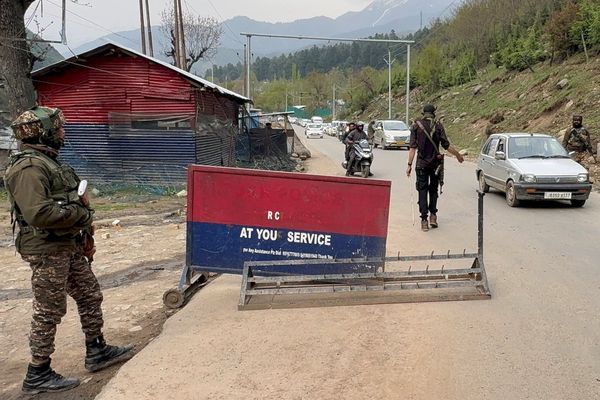A hunger crisis is deepening for food insecure U.S. households, as they face the fallout of a recent severe winter storm and extreme cold weather conditions likely in the weeks to come.
Driving the news: Food insecurity is already a critical problem affecting millions of Americans. Multiple experts tell Axios the escalating burden of extreme winter weather, compounding with higher food prices, is cause for concern.
The big picture: People of color, those with disabilities and unhoused populations are most impacted by food insecurity in the U.S., according to Zia Mehrabi, an assistant professor in the Department of Environmental Studies at UC Boulder.
- Mehrabi, who researches food security and climate change, tells Axios in an email that extreme events exacerbated by the warming world will continue to stress food prices — which have surged in the past year — and deepen existing burdens for these groups in particular.
- "Food insecurity is really a problem of poverty [and] limited access. And those who are most poor are also those who have the least resources to respond and recover from these storms when they hit," says Mehrabi.
Details: Last year, more than 33 million Americans lived in food insecure households, according to the USDA's ERS.
- The share of households with children experiencing food insecurity rose during 2020 before dropping in 2021, which the National Institute for Health Care Management Foundation largely credits to pandemic relief programs.
- The federal government increased Supplemental Nutrition Assistance Program benefits, or SNAP, by 12.5% this fall, adjusted to the rate of inflation. But the child tax credit expansion, which helped reduce child poverty between 2020 and 2021 by 46%, expired at the end of last year.
What they're saying: Melissa Spiesman, COO at the nonprofit Food Rescue US, tells Axios that many agencies that serve the food insecure were closed during the pandemic and have not reopened since.
- "So, a lot of the resources that were in place before the pandemic, never really reemerged afterwards," says Spiesman.
- The organization has locations in 21 states that transfer food surpluses from local businesses to agencies serving the food insecure. It expects to see a demand in need due to the winter storm and impending colder-than-average temperatures, which will compound with higher food prices and holiday stressors.
- Spiesman also expects the extreme weather impacts will financially strain already food insecure families, while pushing low-income households on the brink into becoming food insecure.
- "When you're just on the verge of it, everything is fragile and everything has an impact."
Meanwhile: A blast of Arctic air straight from Siberia is poised to spread across the continental U.S. around Christmas, shattering records and potentially spinning up major storms forecast to hit the Great Plains, Central U.S. and the East, Axios' Andrew Freedman reports.
- Data from the USDA's ERS finds that the states with the highest average rates of food insecurity between 2019 and 2021 include Mississippi, Arkansas, Louisiana, West Virginia, Oklahoma, Texas, Alabama, South Carolina and Kentucky. Some of those states are likely to see impacts from the Arctic outbreak.
The intrigue: Conditions brought on by the winter storm and looming cold snap could mean subsequent impacts in the winter wheat zone, according to Felippe Reis, a crop analyst at EarthDaily Analytics.
- Winter is the fastest-warming season for much of the U.S., with episodes of weather whiplash occurring more frequently as unusually mild conditions are quickly followed by cold snaps.
- If an area experiences extreme cold temperatures but less intense snow, which Reis predicts could be the case for parts of states like Montana — where one in seven children face hunger — the likelihood for possible damage to winter wheat crops increases.
State of play: This is just one of the climate impacts to agricultural production that the U.S. is seeing as the world continues to warm, according to Corey Lesk, a climate scientist and research associate at Dartmouth College.
- "A lot of climate extremes in the major producing parts of the country that regularly affect the crop output have been getting worse," Lesk tells Axios.
Yes, but: Poverty, unemployment, a lack of affordable housing and lack of access to health care, as well as systemic racial inequities, are all mechanisms driving the food insecurity that affects around 10% of U.S. households, according to the nonprofit Feeding America.
The bottom line: "You can produce a great crop. That doesn't mean people are going to be food secure," says Lesk. "In the United States, the food security problem is more of a social problem."







